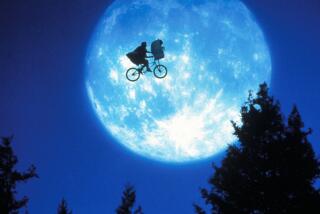Another look at Hepburn
- Share via
Over her long and storied career, which included 12 Academy Award nominations and a record four wins for best actress, Katharine Hepburn personified a peculiarly American, dignified grit.
And with her 100th birthday approaching Saturday, she’s being celebrated for the Kate we knew, even as hidden elements of her personality continue to surface.
Turner Classic Movies has been remembering Hepburn, who died in June 2003 at 96, by showing several of her films this week -- from her 1932 debut, “A Bill of Divorcement,” to 1967’s “Guess Who’s Coming to Dinner,” which earned her the second of her Oscars.
Robert Osborne, the channel’s host, believes her appeal came from “her class and her oddity and her uniqueness. She was a wonderful role model for women, being independent, being her own person. She was one of those like Bette Davis, like Barbara Stanwyck -- she gave license to women to be independent. I think that’s one of the great things she did.
“That was a different era then,” he added. “Even common farm women wanted to be classy. Today everyone wants to be unclassy -- people show up in restaurants in major cities looking like hell. In those days, people came to New York and they brought their best clothes and they dressed up and went out. It’s so alien to the way they feel today. People loved Hepburn because she was so classy, she was somebody to aspire to.”
That’s an image she crafted with great calculation in the name of fame, William J. Mann says in his recent biography, “Kate: The Woman Who Was Hepburn.” From her real birth date to just how wealthy and wacky her New England family was to the true nature of her longtime relationships with women and with Spencer Tracy, Hepburn projected a very specific -- and not always truthful -- version of herself, Mann says.
Over three years of research, which included letters and documents released after her death, Mann was surprised to find that “the real Katharine Hepburn turned out to be even more fascinating than the one we had on the movie screen. She was far more ambitious, far more driven, far more shrewd and more honest and more human, too, than we thought.
“I think she would have had an army of publicists around her today,” he continued. “In her day, she did it all herself, which makes the creation of the mythic Hepburn even more impressive. She was able to create this legend about herself, she turned herself into this paragon, and she did it pretty much single-handedly.”
Despite the laurels and admiration she received as her career progressed, she wasn’t always known for the quality of her acting. She was, after all, the inspiration for the phrase “box office poison,” which a theater chain owner dubbed her after a series of flops in the mid-1930s.
“She was a great personality -- I think she was a really good actress but a great personality,” Osborne said. “She became a star because of her personality and also because of her daring to be different, doing it by her own rules. I think she made up her mind she was going to be a success and forced it on all of us.”
Mann got the idea for his book after seeing the emotional response to her death. Although many books had been written about her -- and she’d come up with one of her own, 1991’s “Me: Stories of My Life” -- he realized a full, true biography of Hepburn could never have been written while she was alive.
“She had transcended that idea of being a star of Hollywood movies into being something much more. She had really become a symbol of American character.”
Osborne believes her best work was in “Alice Adams” (1935), while Mann points to “Holiday” and “Bringing Up Baby,” roles in 1938 that crystallized her career.
“In both films you got a sense of the real Hepburn -- subversive, rebellious Katharine Hepburn, always upending expectations,” he said. “ ‘The African Queen’ [1951] transformed her into what we think of her today -- the noble, gruff spinster, afraid of nothing.”
If Hepburn were alive today -- young, vibrant and about to burst onto the Hollywood scene -- she might not have become an actress at all, Osborne said.
“She’d be the head of Vogue magazine. She’d be like Tina Brown, running something, running a corporation,” he said.
More to Read
Only good movies
Get the Indie Focus newsletter, Mark Olsen's weekly guide to the world of cinema.
You may occasionally receive promotional content from the Los Angeles Times.










